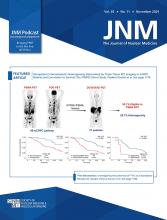Visual Abstract
Abstract
The Registry of Fast Myocardial Perfusion Imaging with Next-Generation SPECT (REFINE SPECT) has been expanded to include more patients and CT attenuation correction imaging. We present the design and initial results from the updated registry. Methods: The updated REFINE SPECT is a multicenter, international registry with clinical data and image files. SPECT images were processed by quantitative software and CT images by deep learning software detecting coronary artery calcium (CAC). Patients were followed for major adverse cardiovascular events (MACEs) (death, myocardial infarction, unstable angina, late revascularization). Results: The registry included scans from 45,252 patients from 13 centers (55.9% male, 64.7 ± 11.8 y). Correlating invasive coronary angiography was available for 3,786 (8.4%) patients. CT attenuation correction imaging was available for 13,405 patients. MACEs occurred in 6,514 (14.4%) patients during a median follow-up of 3.6 y (interquartile range, 2.5–4.8 y). Patients with a stress total perfusion deficit of 5% to less than 10% (unadjusted hazard ratio [HR], 2.42; 95% CI, 2.23–2.62) and a stress total perfusion deficit of at least 10% (unadjusted HR, 3.85; 95% CI, 3.56–4.16) were more likely to experience MACEs. Patients with a deep learning CAC score of 101–400 (unadjusted HR, 3.09; 95% CI, 2.57–3.72) and a CAC of more than 400 (unadjusted HR, 5.17; 95% CI, 4.41–6.05) were at increased risk of MACEs. Conclusion: The REFINE SPECT registry contains a comprehensive set of imaging and clinical variables. It will aid in understanding the value of SPECT myocardial perfusion imaging, leverage hybrid imaging, and facilitate validation of new artificial intelligence tools for improving prediction of adverse outcomes incorporating multimodality imaging.
- SPECT
- solid-state detector
- myocardial perfusion imaging
- coronary artery disease
- artificial intelligence
- quantitative analysis
Footnotes
Published online Oct. 3, 2024.
- © 2024 by the Society of Nuclear Medicine and Molecular Imaging.
This article requires a subscription to view the full text. If you have a subscription you may use the login form below to view the article. Access to this article can also be purchased.
SNMMI members
Login to the site using your SNMMI member credentials
Individuals
Login as an individual user








